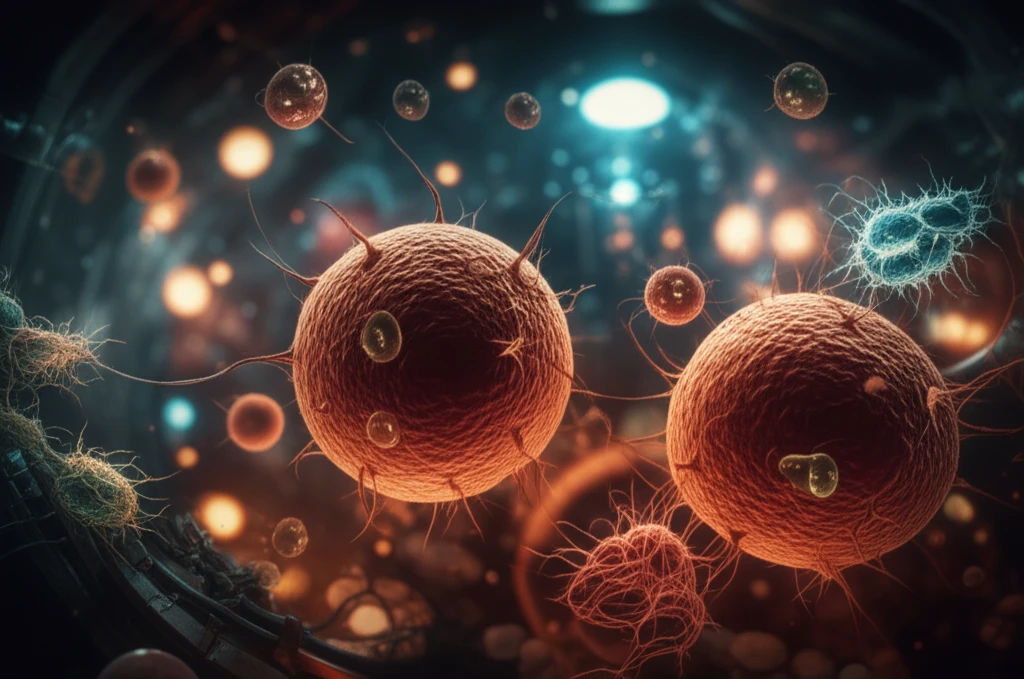
Can Bacteria Help Brew Better Beer? How Co-Evolution is Changing Fermentation
"Scientists explore how interactions between yeasts and bacteria can create more robust and efficient fermentation processes, leading to new possibilities for the beverage industry."
For centuries, fermentation has been at the heart of producing many of our favorite foods and beverages. However, this vital process often faces challenges due to environmental stressors that hinder the efficiency of the microbes involved. Temperature, in particular, plays a crucial role, and finding strains of yeast that can withstand higher temperatures is an ongoing quest.
Traditionally, scientists have sought out these resilient yeasts in extreme environments or have tried to improve existing strains through directed evolution. Now, a groundbreaking study suggests a new approach: harnessing the power of bacterial interactions to enhance yeast's resilience and fermentation capabilities.
Researchers have discovered that by subjecting yeast to the selective pressure of bacteria, they can evolve strains that are not only more heat-tolerant but also more efficient at producing ethanol. This innovative method opens up exciting possibilities for optimizing industrial fermentation processes and developing more robust strains for various applications.
Yeast vs. Bacteria: An Evolutionary Arms Race in the Brew

The study, published in the Journal of Industrial Microbiology & Biotechnology, explores how the common yeast Lachancea thermotolerans can be improved by sequentially exposing it to different bacterial species. This approach mimics the natural environment where yeasts and bacteria often coexist, competing for resources and influencing each other's evolution. The researchers hypothesized that this competition could drive the development of more robust yeast strains capable of withstanding higher temperatures and ethanol concentrations—both desirable traits for industrial fermentation.
- Enhanced Heat Tolerance: Yeast lines grown in the presence of bacteria showed significant growth at 37°C, while control lines struggled at 35°C.
- Improved Fermentation: The co-evolved yeast strains exhibited an increased ability to ferment, making them ideal candidates for alcoholic fermentation.
- Increased Ethanol Production: The overall productivity and ethanol titers per unit volume of substrate consumed were significantly increased in the co-evolved strains.
Beyond Beer: The Future of Co-Evolution in Industrial Biotechnology
This study provides a compelling example of how mimicking natural interactions can lead to significant improvements in industrial processes. By understanding the evolutionary dynamics between microorganisms, scientists can develop more efficient and resilient strains for a variety of applications.
While the focus of this research was on improving yeast for fermentation, the potential applications of co-evolution extend far beyond the beverage industry. This approach could be used to develop strains for biofuel production, pharmaceutical manufacturing, and other industrial processes where microbial robustness is critical.
As researchers continue to explore the intricate relationships between microorganisms, we can expect to see even more innovative strategies for optimizing industrial processes and developing sustainable solutions for a variety of global challenges. This study highlights the exciting potential of harnessing the power of nature to drive innovation and improve our world.
